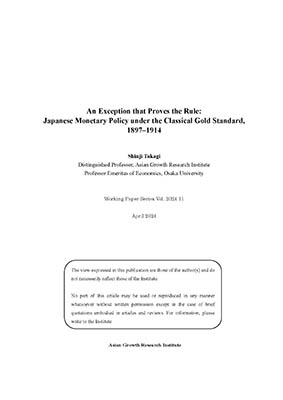An Exception that Proves the Rule:
Japanese Monetary Policy under the Classical Gold Standard,
1897–1914

| Author | Shinji Takagi |
|---|---|
| Date of Publication | 2024. 4 |
| No. | 2024-11 |
| Download | 285KB |
Contents Introduction
The paper explores Japanese monetary policy under the classical gold standard (1897–1914), while providing a succinct exposition of the distinguishing features of the Japanese gold standard regime. The paper, explaining how the Bank of Japan conducted monetary policy, finds that, as a general practice, (i) it used fiduciary issues to offset movements in monetary gold so as to stabilize the supply of currency; (ii) it moved the discount rate in the same direction as the government moved the extra issue tax rate; and (iii) it raised the discount rate in response to an increase in gold outflows. The rules-of-the-game-like behavior of discount rate policy, motivated by the central bank’s mandate to preserve gold convertibility, was robust and consistent, challenging the semi-consensual view that violations of the rules were frequent and pervasive under the classical gold standard.
